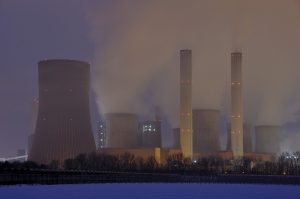 The National Capital Area Chapter for the U.S. Association for Energy Economics (NCAC-USAEE) held its annual energy policy conference on April 6th entitled “Energy Reset? Conflicting Forces in the Energy Space.” The event captured the economic implications of the announced and expected shift in energy policy between the Obama and Trump administrations. One reoccurring theme was the evolving role of government and market influences. It began with Thad Hill, CEO and President of Calpine Corp., emphasizing the need for free “markets, not mandates” and Tom Pyle, President of the American Energy Alliance, detailing President Trump’s energy deregulation agenda.
The National Capital Area Chapter for the U.S. Association for Energy Economics (NCAC-USAEE) held its annual energy policy conference on April 6th entitled “Energy Reset? Conflicting Forces in the Energy Space.” The event captured the economic implications of the announced and expected shift in energy policy between the Obama and Trump administrations. One reoccurring theme was the evolving role of government and market influences. It began with Thad Hill, CEO and President of Calpine Corp., emphasizing the need for free “markets, not mandates” and Tom Pyle, President of the American Energy Alliance, detailing President Trump’s energy deregulation agenda.
A panel on electricity generation began with Stephen Munro of Bloomberg New Energy Finance outlining the economic and policy landscape, followed by a colorful discussion between Tom Matzzie of CleanChoice Energy and Ray Shepherd from Peabody Energy on the role of public policy, especially regarding renewables and coal. Munro noted rising deployment and cost reductions for wind and solar, which have unsubsidized average output costs equivalent to natural gas generation in some states. Shepherd mentioned the value of high-efficiency generation and carbon capture, utilization, and storage. This technology currently requires public policy support. Matzzie emphasized that all forms of energy have received subsidies, many dating back to the 19th century.
Hill has previously stated that putting a price on carbon will let free markets drive emission reductions, which is a better option than government mandates and tax credits. This echoes points made by the independent market monitors of regional transmission organizations. The uptick in interventions has primarily come from the state level, prompting the Federal Energy Regulatory Commission to host a technical conference in May on state policy interventions.
James: I reviewed the agenda of the NCAC-USAEE conference you cite and I am left wondering how it is possible to have a cogent conference on energy economics and policy… Read more »
Dan, I attended the conference, and assure you climate change policy was a regular discussion item. It’s also important to distinguish energy economics from environmental economics. The conference was about… Read more »
Devin: I’m glad to hear that climate change was a discussion topic even if it was not mentioned in the agenda. While we have in the past and still do… Read more »
Over the past 40 years, the federal government has steadily encroached on the energy market. First, it was to find alternatives to oil and gas because it was believed that… Read more »
Bill: 1) Because of fugitive emissions, natural gas does not have substantially lower greenhouse gas emissions than coal over a 20-year timeframe and NG emissions may actually be higher in… Read more »
Dan The late Daniel Patrick Moynihan once observed that we were all entitled to our own opinions; just not our own facts or in today’s vernacular our own alternative facts.… Read more »
Great framing in the prompt James! While government intervention has and will always play some role in electricity markets, the nature and extent of that role has shifted considerably in… Read more »
Devin: Enhancing markets is not the goal. Enhancing the well being of our citizens is the goal. While an unfettered market enhances the well being of people in many case,… Read more »
2. Will the new Administration’s energy deregulation agenda translate into letting competitive forces determine power investments? I am continually amazed by the contradictions embraced by ‘free market’ enthusiasts … The… Read more »